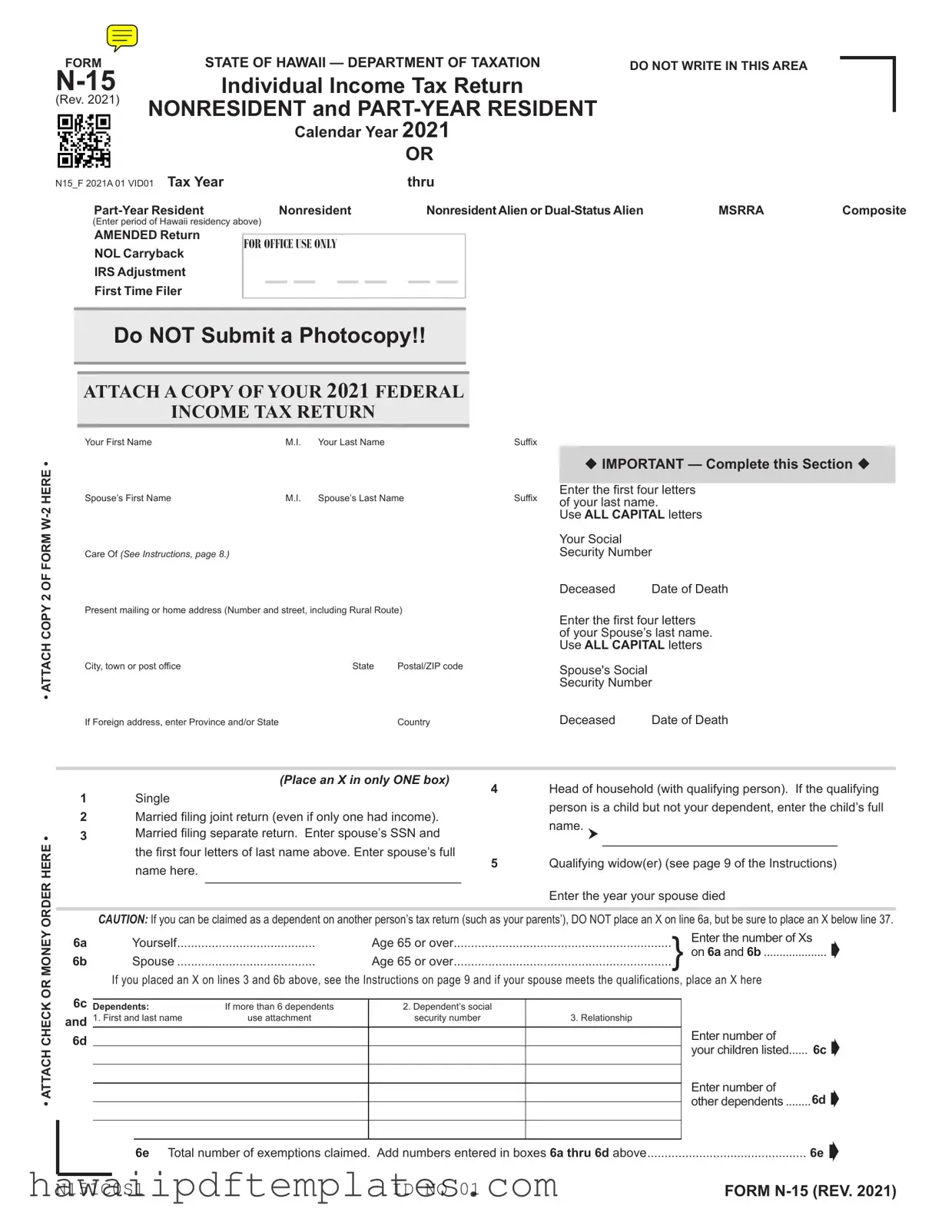Steps to Writing Hawaii N15 Tax
Filling out the Hawaii N15 Tax form can seem daunting, but breaking it down into manageable steps can make the process much easier. This form is specifically for nonresidents and part-year residents, so it’s important to gather all necessary information before you begin. Follow these steps to ensure you complete the form accurately and efficiently.
- Start by downloading the Hawaii N15 Tax form from the official website or obtain a physical copy.
- At the top of the form, make sure to fill in your personal information, including your name, Social Security number, and address. If you're filing jointly, include your spouse’s details as well.
- Indicate your filing status by placing an "X" in the appropriate box. Choose from options like "Single," "Married filing jointly," or "Head of household."
- List your dependents in Section 6, providing their names, Social Security numbers, and relationship to you.
- In the income section (lines 7-19), enter your total income from various sources, such as wages, dividends, and other income. Make sure to attach any necessary forms, like W-2s.
- Calculate your total income by adding lines 7 through 19 and write the sum on line 20.
- Next, move to the adjustments section (lines 21-34). Enter any deductions or adjustments to your income, such as student loan interest or IRA deductions.
- Subtract your total adjustments from your total income to find your Adjusted Gross Income (line 35).
- Proceed to the deductions section. If you are itemizing, follow the instructions to fill in your deductions from lines 38a to 38f. If not, enter the standard deduction based on your filing status on line 40a.
- Calculate your taxable income by subtracting your deductions from your Adjusted Gross Income (line 43).
- Determine your tax amount using the tax table or tax rate schedule, and enter it on line 44.
- List any refundable credits you qualify for on lines 45-49, and calculate your total refundable credits on line 50.
- Subtract your total refundable credits from your tax amount to find your adjusted tax liability (line 51).
- Include any nonrefundable tax credits on line 52 and subtract them from your adjusted tax liability to find your balance (line 53).
- Fill out the payment section, including any amounts withheld or estimated tax payments made, and calculate your total payments on line 58.
- If you have an overpayment, calculate it on line 59. If you owe taxes, fill in the amount on line 65.
- Lastly, sign and date the form. If filing jointly, your spouse must also sign.
After completing the form, ensure you attach any required documents, such as W-2 forms and your federal income tax return. Double-check all entries for accuracy before submitting your N15 Tax form to the Hawaii Department of Taxation. This careful attention to detail will help you avoid delays and ensure your tax return is processed smoothly.
